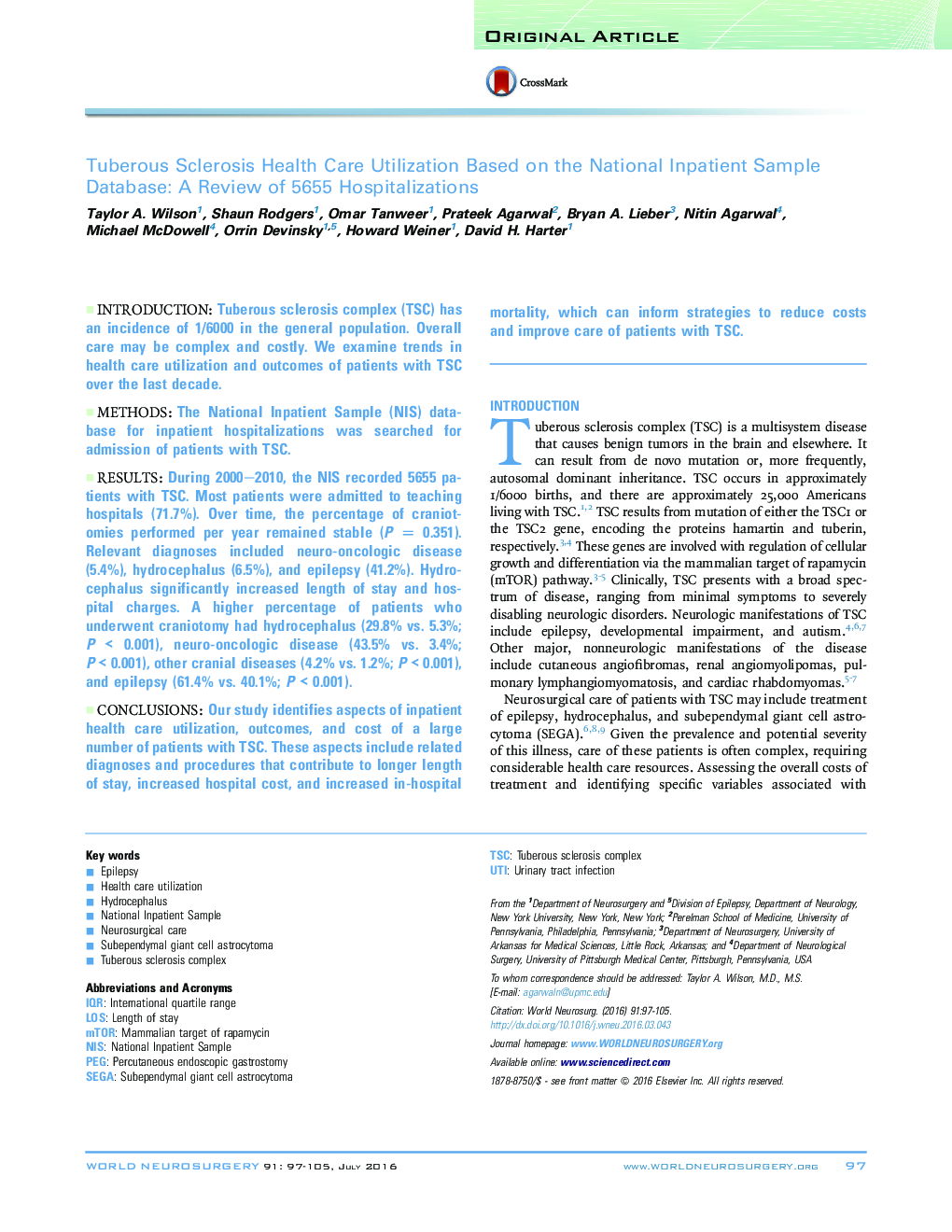| Article ID | Journal | Published Year | Pages | File Type |
|---|---|---|---|---|
| 3094532 | World Neurosurgery | 2016 | 9 Pages |
IntroductionTuberous sclerosis complex (TSC) has an incidence of 1/6000 in the general population. Overall care may be complex and costly. We examine trends in health care utilization and outcomes of patients with TSC over the last decade.MethodsThe National Inpatient Sample (NIS) database for inpatient hospitalizations was searched for admission of patients with TSC.ResultsDuring 2000–2010, the NIS recorded 5655 patients with TSC. Most patients were admitted to teaching hospitals (71.7%). Over time, the percentage of craniotomies performed per year remained stable (P = 0.351). Relevant diagnoses included neuro-oncologic disease (5.4%), hydrocephalus (6.5%), and epilepsy (41.2%). Hydrocephalus significantly increased length of stay and hospital charges. A higher percentage of patients who underwent craniotomy had hydrocephalus (29.8% vs. 5.3%; P < 0.001), neuro-oncologic disease (43.5% vs. 3.4%; P < 0.001), other cranial diseases (4.2% vs. 1.2%; P < 0.001), and epilepsy (61.4% vs. 40.1%; P < 0.001).ConclusionsOur study identifies aspects of inpatient health care utilization, outcomes, and cost of a large number of patients with TSC. These aspects include related diagnoses and procedures that contribute to longer length of stay, increased hospital cost, and increased in-hospital mortality, which can inform strategies to reduce costs and improve care of patients with TSC.
